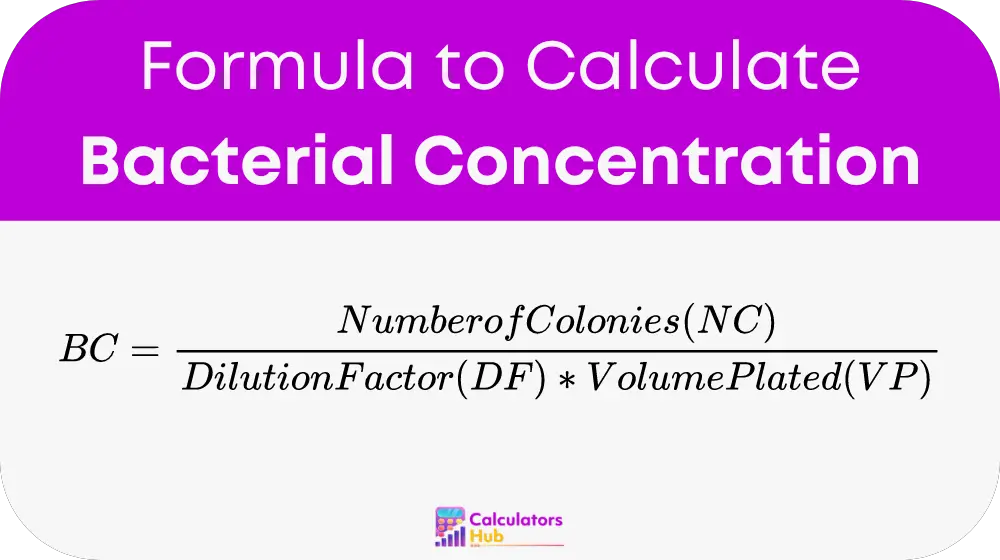The Bacterial Concentration Calculator is a tool used to determine the concentration of bacteria in a given sample. This is crucial for various applications, such as monitoring bacterial contamination in water, food safety, and assessing bacterial growth in research labs. By calculating bacterial concentration, scientists and technicians can ensure that their results are accurate and that they adhere to necessary standards and regulations.
Formula of Bacterial Concentration Calculator
To calculate bacterial concentration, use the following detailed formula:

Where:
- Bacterial Concentration (BC) is the concentration of bacteria in the original sample.
- Number of Colonies (NC) is the count of bacterial colonies observe on the agar plate.
- Dilution Factor (DF) is the factor by which the original sample was dilute.
- Volume Plated (VP) is the volume of the diluted sample that was plate, typically in milliliters.
Conversion Table
| Term | Description | Example |
|---|---|---|
| Number of Colonies (NC) | Count of colonies on the agar plate | 150 |
| Dilution Factor (DF) | The ratio by which the sample was diluted | 10 |
| Volume Plated (VP) | Volume of the diluted sample plated (in milliliters) | 1 |
This table serves as a quick reference for understanding the terms used in the calculation and their typical values.
Example of Bacterial Concentration Calculator
Let's go through an example to illustrate the use of the bacterial concentration formula. Suppose you have counted 120 colonies on an agar plate. The sample was dilute by a factor of 100, and you plated 0.1 milliliters of this diluted sample.
Using the formula:
Bacterial Concentration (BC) = Number of Colonies (NC) / (Dilution Factor (DF) * Volume Plated (VP))
BC = 120 / (100 * 0.1)
BC = 120 / 10 = 12
So, the bacterial concentration in the original sample is 12 colonies per milliliter.
Most Common FAQs
A1: If you have too many colonies to count accurately, you may need to dilute your sample further and replate it to get a countable number of colonies.
A2: For samples with very few colonies, make sure to use a larger volume of the sample or use a more sensitive detection method to ensure accurate results.
A3: Yes, the formula is applicable to any type of bacteria as long as the colonies are count under similar conditions and the same methodology is use.